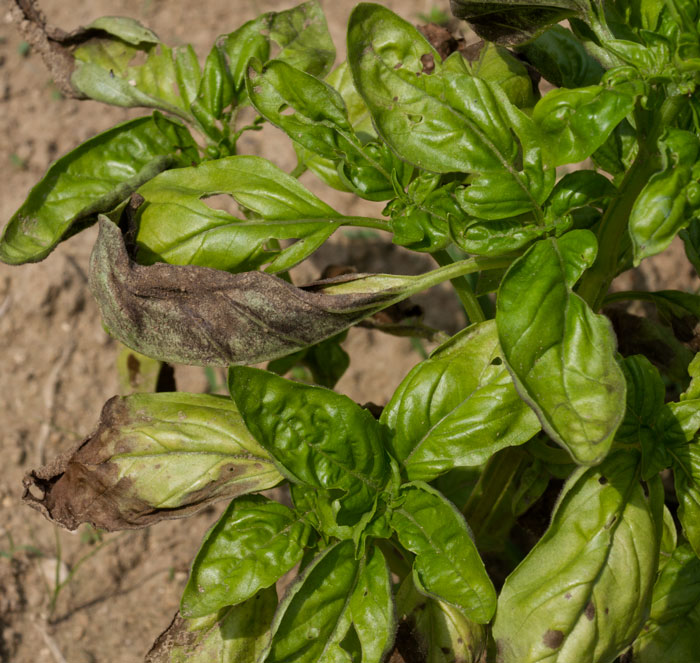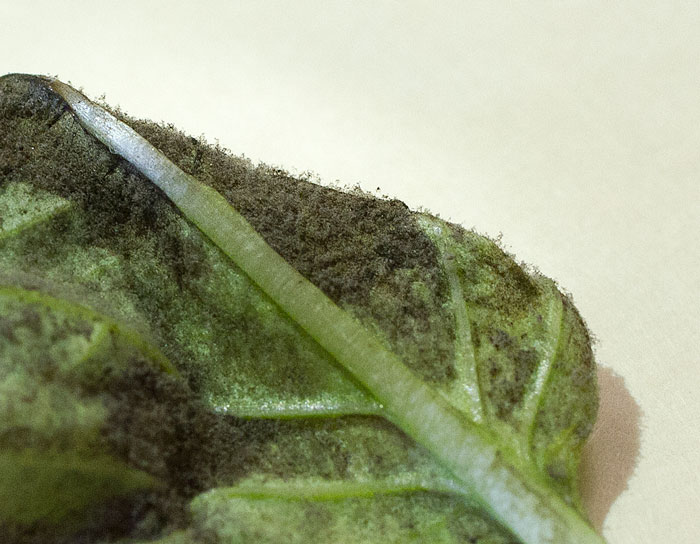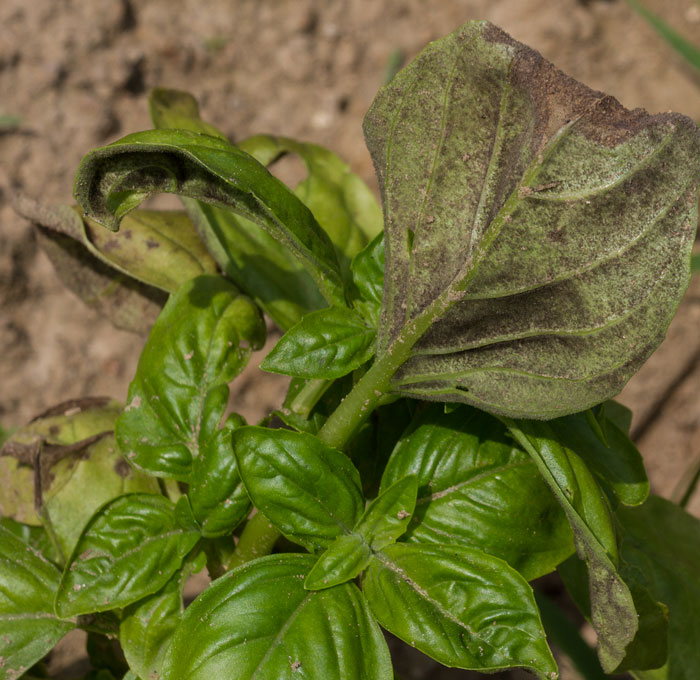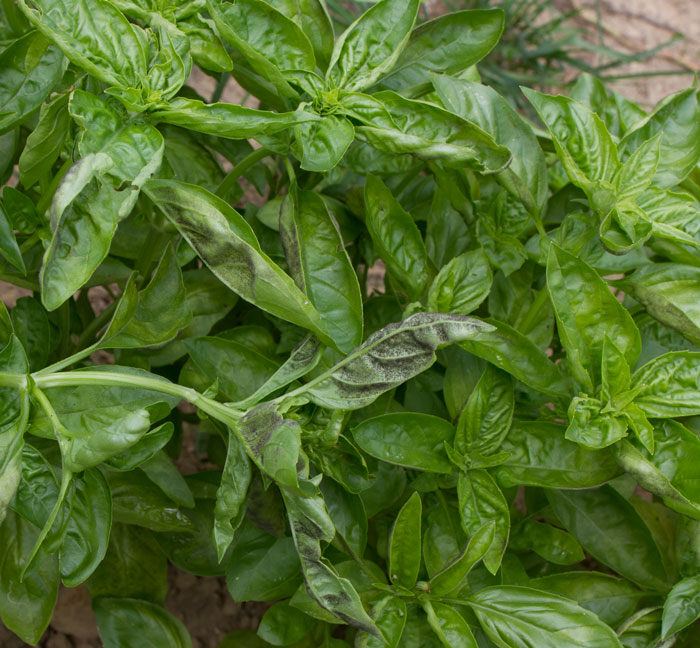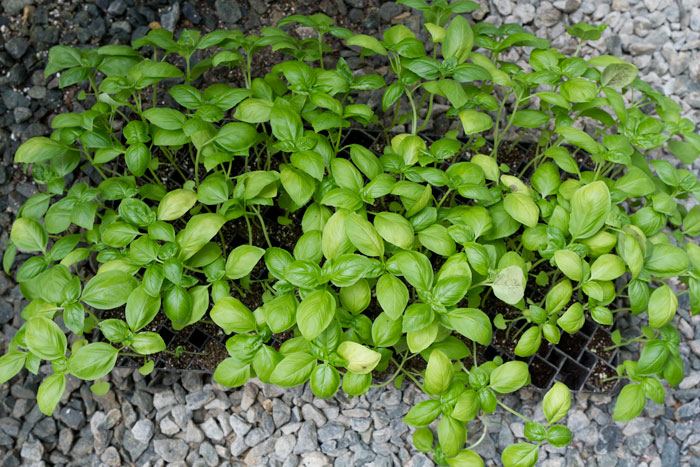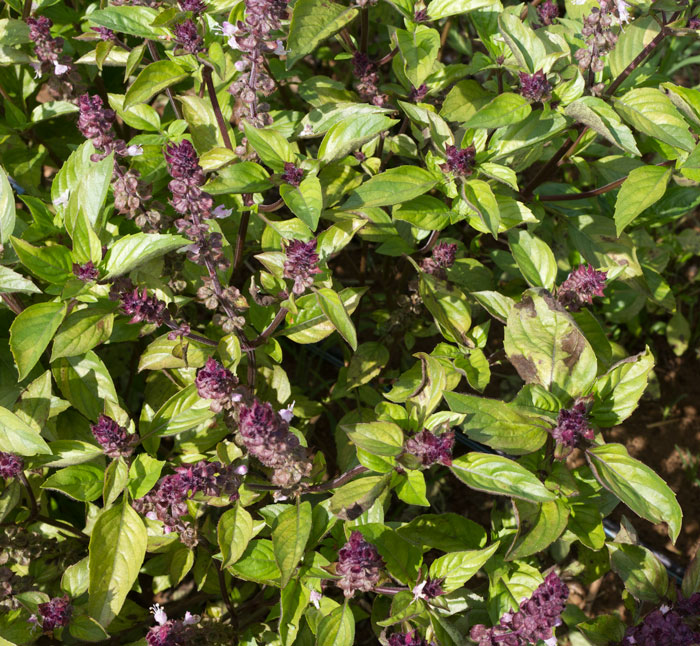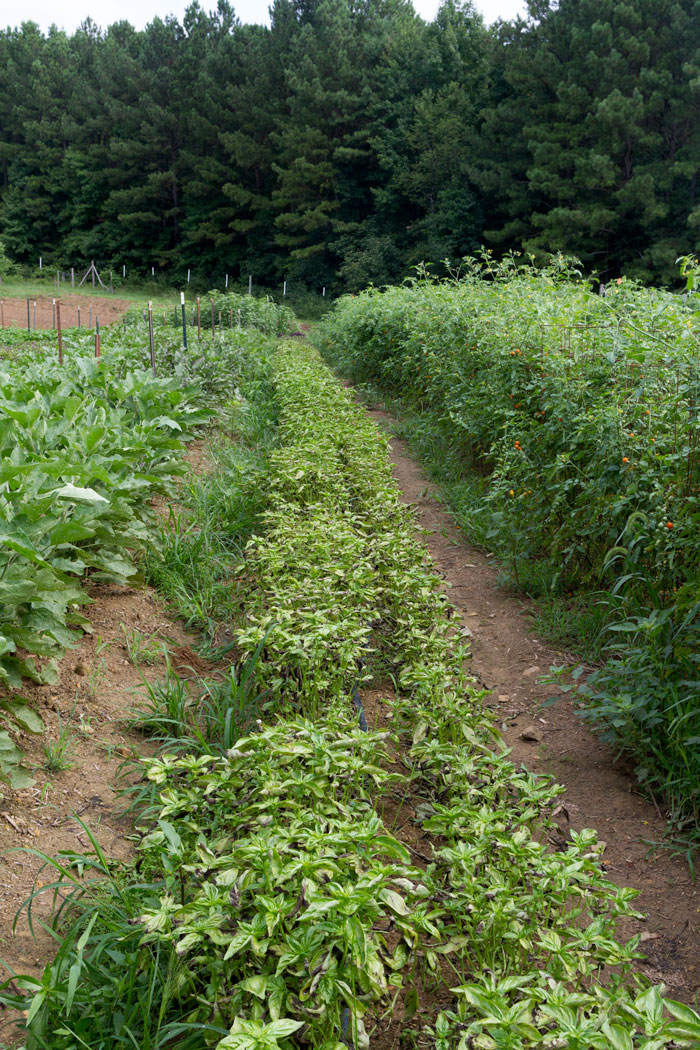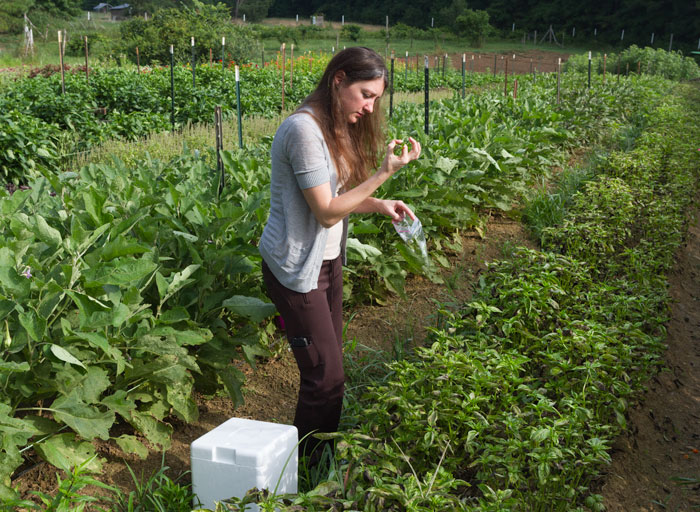2014 Basil Downy Mildew Outbreak Our Worst One Yet
go.ncsu.edu/readext?310340
en Español / em Português
El inglés es el idioma de control de esta página. En la medida en que haya algún conflicto entre la traducción al inglés y la traducción, el inglés prevalece.
Al hacer clic en el enlace de traducción se activa un servicio de traducción gratuito para convertir la página al español. Al igual que con cualquier traducción por Internet, la conversión no es sensible al contexto y puede que no traduzca el texto en su significado original. NC State Extension no garantiza la exactitud del texto traducido. Por favor, tenga en cuenta que algunas aplicaciones y/o servicios pueden no funcionar como se espera cuando se traducen.
Português
Inglês é o idioma de controle desta página. Na medida que haja algum conflito entre o texto original em Inglês e a tradução, o Inglês prevalece.
Ao clicar no link de tradução, um serviço gratuito de tradução será ativado para converter a página para o Português. Como em qualquer tradução pela internet, a conversão não é sensivel ao contexto e pode não ocorrer a tradução para o significado orginal. O serviço de Extensão da Carolina do Norte (NC State Extension) não garante a exatidão do texto traduzido. Por favor, observe que algumas funções ou serviços podem não funcionar como esperado após a tradução.
English
English is the controlling language of this page. To the extent there is any conflict between the English text and the translation, English controls.
Clicking on the translation link activates a free translation service to convert the page to Spanish. As with any Internet translation, the conversion is not context-sensitive and may not translate the text to its original meaning. NC State Extension does not guarantee the accuracy of the translated text. Please note that some applications and/or services may not function as expected when translated.
Collapse ▲Photos and text by Debbie Roos, Agricultural Extension Agent.
Basil downy mildew has been confirmed in Chatham and five other North Carolina counties. The disease first appeared in the U.S. in 2007 and has been widespread throughout the country this year with over 200 cases, mostly in the eastern U.S.
Many of our market farmers grow several varieties of both culinary sweet basil and ornamental basil for cut flower bouquets. They often will do multiple plantings to extend the harvest. Basil downy mildew can devastate a basil crop. One Chatham County grower just had to disc in her entire basil crop due to a severe infection of downy mildew (see photos below). She had planted six varieties of basil and all had become infected, from a young crop recently planted in the field to mature plantings. Even the transplants in the greenhouse which were to be planted this week became infected. Basil downy mildew has caused a significant economic loss for this grower and many others.
Basil downy mildew can be overlooked by growers because the initial symptoms tend to be subtle: the plants exhibit slightly yellowing leaves as their most noticeable symptom, which may resemble a nutritional deficiency. The dark fuzzy-looking sporulation occurs on the undersides of the leaves. The disease is serious because it renders the leaves unmarketable. The disease can be spread from infected seed or leaves or from wind-dispersed spores which can travel long distances. It thrives in our humid summers. Really high temperatures knock it back, which is why the disease was not as severe during the summers of 2011-2012 when we had record-breaking heat. The cooler than average temperatures we have experienced lately have likely favored the disease.
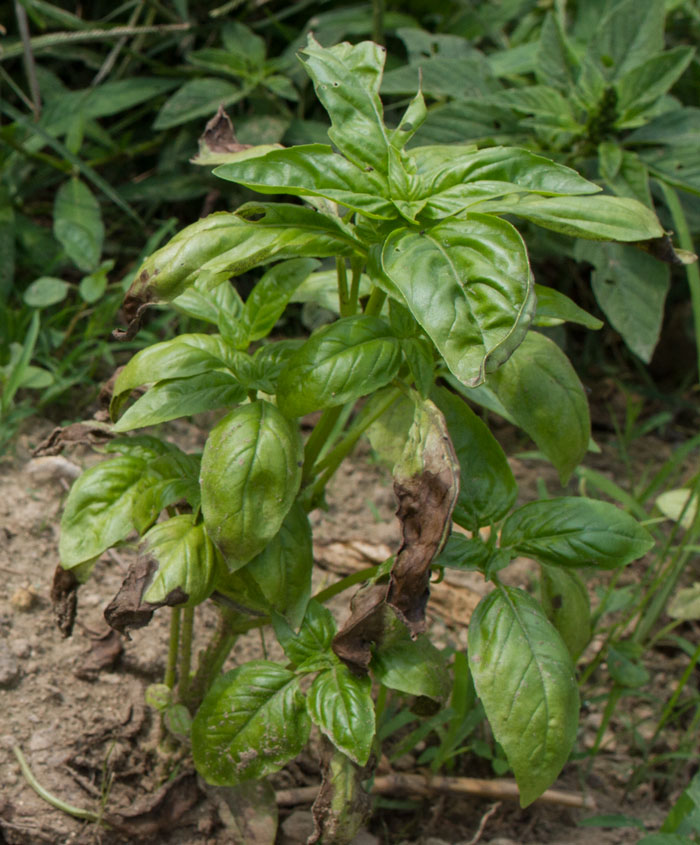
Basil downy mildew on young Genovese basil plant; upper surfaces of leaves often turn yellow and eventually become necrotic

Young basil plants infected with basil downy mildew; they were disced in shortly after this photo was taken
Management Strategies:
North Carolina basil growers are at high risk for seeing this disease on their basil. It will continue to sporulate and spread. Be on the look-out for this disease and try and catch it early. Remove and destroy infected plants to help slow the spread to other rows and/or fields. If you can catch it early enough and cull it you might be able to slow it down. There are no conventional or organic fungicides that have shown to be very effective against this disease.
Anything a grower can do to minimize leaf wetness and reduce humidity within the plant canopy can help slow the disease. This can include using drip irrigation, increasing plant spacing, and improving air flow across beds and in greenhouses.
Dr. Meg McGrath of Cornell University has been working on basil downy mildew for many years. I talked with her today to ask her about seed treatment since basil downy mildew can be seed-borne. She said to not even bother treating seed if you are growing it during its normal season because the spores are ubiquitous outdoors and it won’t make a difference. Folks growing basil in greenhouses during the winter should treat seed, although it’s difficult to do so in hot water or bleach since basil seed produces a gelatinous exudate in water making it very difficult to handle. Some seed companies are now steam-treating basil seeds.
Dr. McGrath has done research on resistant varieties and found that the sweet basil variety ‘Eleonora’ is partially resistant to downy mildew. It still becomes infected but not as severe as other varieties. This variety should be available from Johnny’s Selected Seeds in November. Dr. McGrath is currently conducting research on organic fungicides in combination with this partially resistant variety and will share results of that research later this year on her basil downy mildew web page.
NC State University Plant Pathologist Dr. Lina Quesada is doing DNA and RNA sequencing of the pathogen to build a genome for basil downy mildew. Her lab is collecting samples from the various counties to learn more about this new disease (see photo below of her Lab Manager collecting samples from a local farm).
If you think you have downy mildew in your basil please contact your county Agriculture Agent and send photos and/or physical samples to the Plant Disease and Insect Clinic to confirm diagnosis of the disease. If downy mildew is confirmed in your samples by an expert, please consider making a report to warn others that the pathogen is in the area. The report can be anonymous so that only the county information is provided.
For more information:
North Carolina State University Basil Downy Mildew Alert
Expect and Prepare for Downy Mildew in Basil – Cornell University




